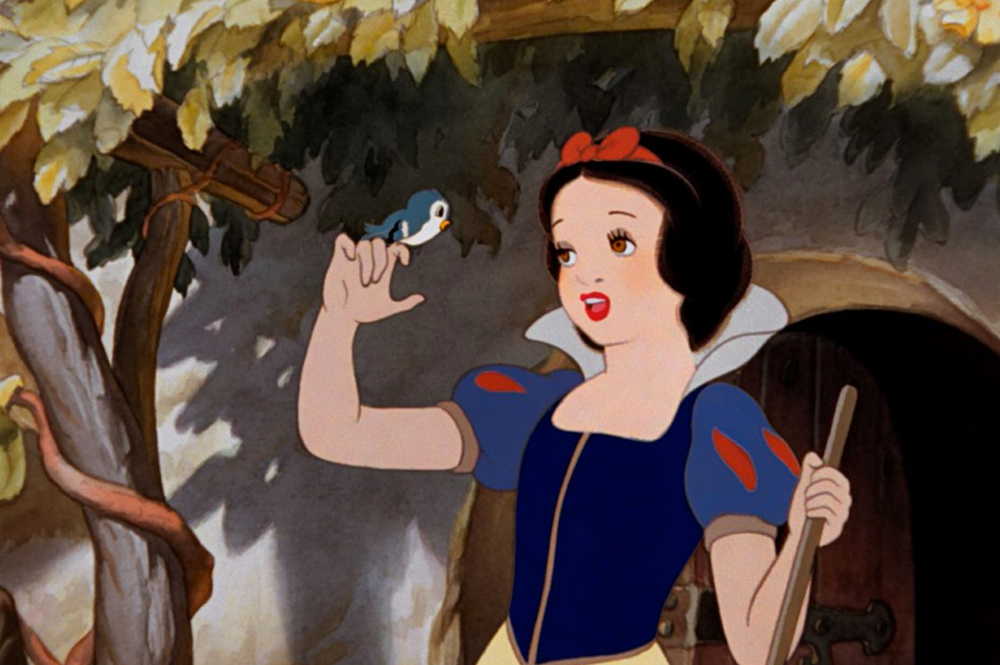Image from Snow White and the Seven Dwarfs (1937). © Disney. Sourced via That Old Picture Show. Used here under Fair Use for commentary.
By Diane Pascual
Back in 2009–2011, I was deep in the world of character design, storyboarding, and late-night assignments while working on my MFA at the Academy of Art University in San Francisco. Those years were magical in the most chaotic way: jam-packed with 10-12 hour drawing marathons, late night musings about living a creative life, and coffee-fueled dreams of one day working in the animation industry.
One story we kept hearing in class—almost like a design school myth—was the story of Walt Disney risking it all to make Snow White and the Seven Dwarfs. Our instructors told us how people in the industry laughed at him, how everyone called it “Disney’s Folly”. But he proved them wrong. The movie became a massive hit and forever changed animation history.
At the time, I remember thinking: Wow, that’s wild—he was totally broke and still finished it. But what no one really said out loud in class was this:
Walt wasn’t just lucky. He was visionary—and he took the kind of risk most people are terrified of.
Now, years later, after freelancing, launching my own creative business, teaching design thinking, and diving back into books like The Psychology of Money by Morgan Housel, I see this story through a different lens.
Luck and Risk: Two Sides of the Same Coin
In Housel’s book, he writes something that stuck with me:
“Luck and risk are siblings. They’re both the reality that every outcome in life is guided by forces other than individual effort.”
Walt Disney didn’t just have talent—he mortgaged his house, his studio, and his entire future in the hope that audiences would sit through a 90-minute animated feature (which had never been done). He went $1.5 million deep into a project during the Great Depression.
He bet everything.
And it paid off—Snow White made $8 million in its initial release (the equivalent of over $160 million today) and changed what was possible for animation, storytelling, and entrepreneurship in the creative world.
But what if it hadn’t worked?
This is where the real lesson hits: Creative success is never guaranteed. It’s a delicate mix of vision, execution, timing, and, yes, a bit of luck.
What This Taught Me As an MFA Student
Looking back, those long hours in grad school weren’t just about learning how to draw well or how to animate a turnaround. They were about learning to trust a vision. To build something even if no one else sees it yet.
I think about my old blog dianepascual.blogspot.com—the one where I used to post process shots, thumbnails, or random reflections from the studio lab downtown. That version of me was just beginning to understand what it meant to build something that mattered.
Walt’s story reminds me that sometimes the creative path feels lonely. Sometimes you don’t get the instant win. Sometimes people don’t get it. But if the vision is strong enough, and the work is solid—you might just make something timeless.
The Business of Design: A Note to My Students
Now that I teach design thinking and the business side of creativity, I share this story not just as a nostalgic memory, but as a real lesson in what it means to pursue a creative career:
- You will have to take risks.
- You will have to work when no one’s watching.
- And you will need to believe in something before there’s evidence it will succeed.
Just like Walt did.
So if you’re building your portfolio, launching a side project, or daydreaming about something that no one else sees yet—don’t give up. Learn the business, understand the risk, and don’t be afraid to take a leap.
Let’s Talk: What’s Your “Snow White”?
I’d love to hear from you. What’s one risk you’ve taken that changed your creative journey? Or maybe a project you’re dreaming of that scares you a little? Drop it in the comments or email me—let’s keep this conversation going. Because sometimes, sharing the vision is the first step to making it real. Or join the conversation and follow me on threads!
Follow me @dianepascualart
—
Diane Pascual
Artist • Educator • Dreamer
www.dianepascual.com
IG: @dianepascualart
Threads: @dianepascualart
Disclaimer: This image is used under Fair Use for educational and commentary purposes. All rights to the character and artwork belong to The Walt Disney Company.
